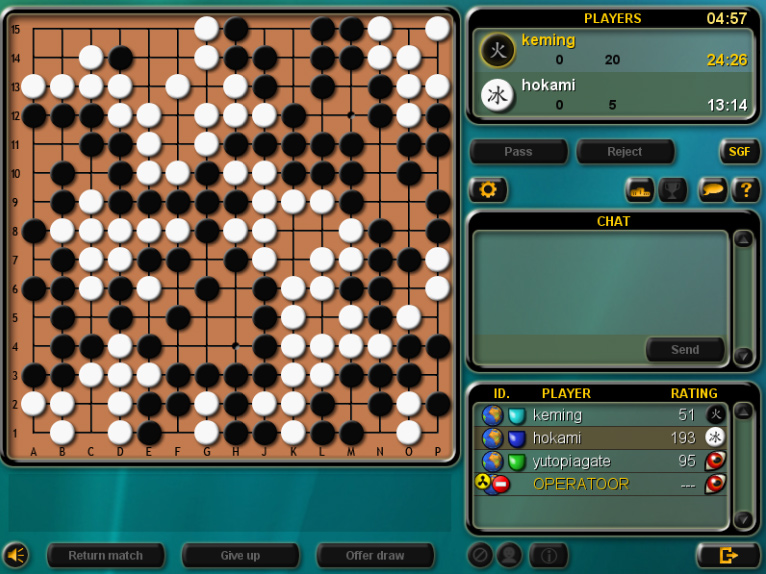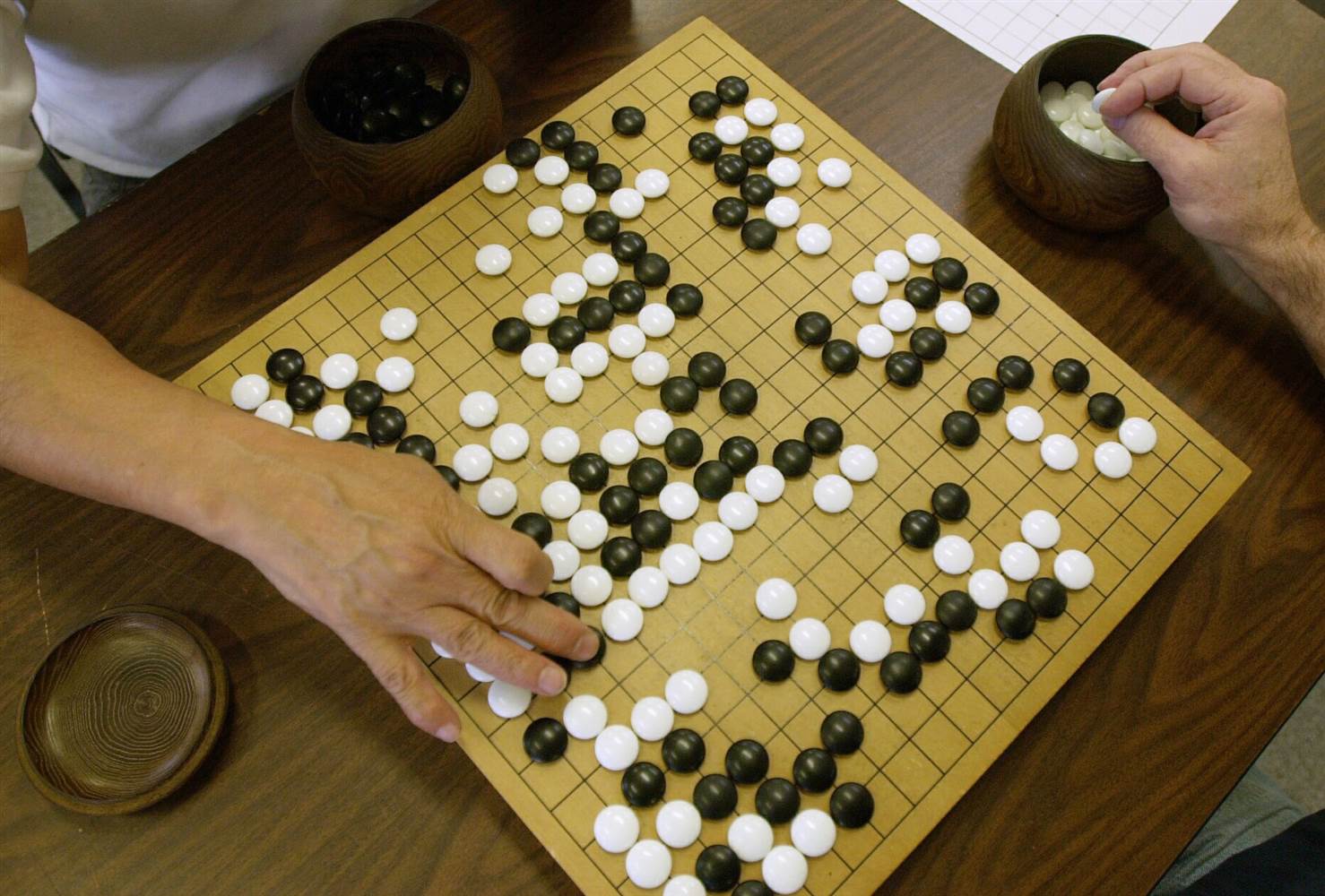

Players from the four houses (Honinbo, Yasui, Inoue, Hayashi) competed in the annual castle games for status and the position of Godokoro, or minister of Go. These officially recognized and subsidized Go schools greatly developed the level of play, and introduced the martial arts style system of ranking players.

Almost immediately, he appointed the then-best player in Japan, Honinbo Sansa, head of a newly founded Go academy (the Honinbo school, the first of several competing schools founded about the same time). In 1603, Tokugawa Ieyasu created Japan's first unified national government. Guan Yu playing Go while having his wounds attended to By the beginning of the 13th century, Go was played among the general public in Japan. Go had reached Japan from China by the 7th century, and gained popularity at the imperial court in the 8th century. Go was considered one of the cultivated arts of the Chinese scholar gentleman, along with calligraphy, painting and playing the guqin, together known as 琴棋書畫 ( 四艺, pinyin: Sìyì), or the Four Arts of the Chinese Scholar. In China, Go was perceived as the popular game of the aristocratic class while Xiangqi (Chinese chess) was the game of the masses. The earliest written references of the game come from the Zuo Zhuan, which describes a man in 548 BC who likes the game, and Book XVII of the Analects of Confucius, compiled sometime after 479 BC.

Other theories suggest that the game was derived from Chinese warlords and generals who used pieces of stone to map out attacking positions, or that Go equipment emerged from divination material. Some legends trace the origin of the game to Chinese emperor Yao 堯 (2337 - 2258 BC) who designed it for his son, Danzhu, to teach him discipline, concentration, and balance. This screen was made by Kano Eitoku in the 16th century. In many East Asian cultures, Go was considered one of the most important skills a civilized person could learn. This spelling is not widely used outside events sponsored by the Ing foundation. An alternative but uncommon spelling is Goe, proposed by Ing Chang-Ki, the late wealthy promoter of Go (particularly in Taiwan and the US), for the same reason. In order to differentiate the game from the common English verb " go", the game is sometimes spelt with a capital G this convention is not however followed in most of the technical literature on the game. There is also no exact equivalence of concepts in different Asian languages, meaning that Go is still without a standard technical jargon. They point out that in recent years, many Chinese and Korean players have also taught Western students. The widespread use of Japanese terminology in the West notwithstanding, Chinese and Korean members of the international Go community, including professionals, continue to advocate for the primacy of terms from their language in common usage. As a result, many Go concepts for which there is no ready English equivalent have become known elsewhere by their Japanese names.
#Go to it game professional#
The Japan Go Association ( Nihon Ki-in) has long played a leading role spreading Go outside East Asia, publishing the English-language magazine Go Review in the 1960s, establishing Go Centers in the US and Europe, and often sending professional teachers to Western nations for extended periods. Because Japanese professionals taught the first Western players, the latter naturally used the Japanese name in early German-language and then English-language books and articles about the game. The game is most commonly known as 囲碁 ( igo) in Japanese. The writings 棋/碁 are variants, as seen in the Chinese Kangxi dictionary. Its ancient Chinese name is 弈 ( pinyin: yì). The Chinese name Weiqi (圍棋,围棋) roughly translates as " encirclement chess", " board game of surrounding", or " enclosing game". The game is called Go in many languages this word originated from the Japanese pronunciation "go" of the Chinese characters 棋/碁 in Japanese the name is written 碁. The game ends and the score is counted when both players consecutively pass on a turn, indicating that neither side can increase its territory or reduce its opponent's the game can also end by resignation. The objective is to control a larger territory than the opponent by placing one's stones so they cannot be captured. A stone or a group of stones is captured and removed if it is tightly surrounded by stones of the opposing colour. Go is played by alternately placing black and white stones on the vacant intersections of a 19×19 rectilinear grid. It is now popular throughout the world, especially in East Asia. Go originated in ancient China before 500 BC. It is also called Weiqi in Chinese (圍棋,围棋), Igo in Japanese ( Kanji: 囲碁), and Baduk in Korean ( Hangul:바둑). The stones are lenticular and fit closely together when placed on adjacent intersections. A traditional Go board is wooden, with black painted lines.


 0 kommentar(er)
0 kommentar(er)
